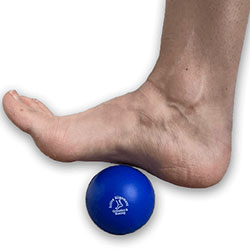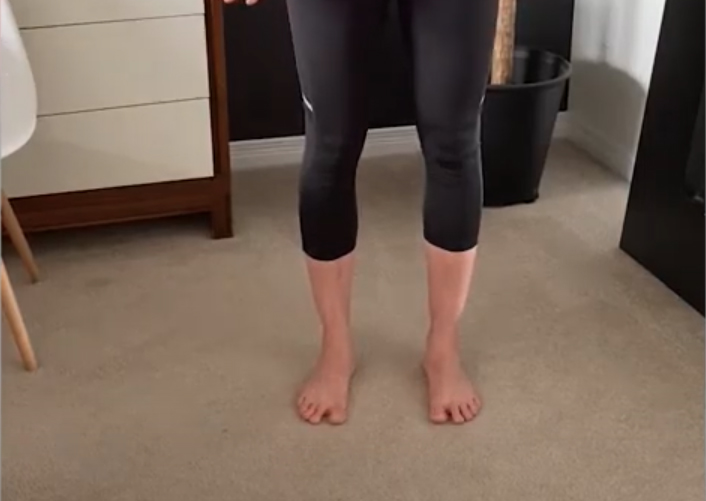In this post, we’re providing a step-by-step tutorial for one of the best foot exercises for enhancing foot stability, optimizing both balance and posture. These are essential to proper muscle function, so this exercise is foundational for a range of other movements that we will cover in future posts. If you’re a visual learner click here to watch the video for this exercise.
This exercise can be done standing or seated.
FROM A STANDING POSITION
Assume a comfortable, relaxed stance with your feet shoulder-width apart and try to move your big toes independently, away from your other toes. This means that you move your toes without touching them to assist in the process.
If you can’t move your toes independently, that’s okay. Just bend and grab your big toes, and then move them over, away from your other toes. If mobility issues restrict you from reaching your toes, use a long, sturdy aid like a long shoe horn to move your toes. Steady yourself by holding onto a railing or the back of a chair, if needed.
Once your big toe is moved over, focus on grounding your lesser four toes by pushing the tips down into the ground, almost like you’re trying to grab onto the ground with your toes.
What you should notice is a tightening in your arch, and potentially a tightening on the outside of your calf muscle. Hold for about five seconds and then relax.
One thing we see a lot in clinic when working with our patients on this foot exercise is a rolling outward of the feet as they start to grab the ground with their toes. Be aware of this as you’re working on this exercise. This motion reflects a loss of balance and muscle function and so will not benefit you in improving the status quo.
To help reduce the tendency to roll out on the outsides of your feet, be conscious of your pressure points that will be activated when the exercise is done properly. These pressure points include the ball/pad just behind the big toe, the pad behind the 5th/baby toe, and the outside edges of the heel.

Therapeutic Massage Ball
When this foot exercise is done properly, you should feel even pressure across all of these pressure points, and your arch will lift up (not out).
If you develop some cramping in your arch while doing foot exercises like this, just take a break, relax the foot, and even roll your arch on a therapeutic exercise/massage ball (see our Products page). Then when the cramping has subsided, try the exercise again.
This foot exercise helps condition the foot. So, as you practice and get better at this exercise, you should be able to go longer before the onset of cramping.
FROM A SEATED POSITION
Some may find this foot exercise easier to do from a seated position, especially those who suffer from hallux valgus (a big toe that starts to deviate toward the other toes) or have bunions. These foot conditions tend to cause a decrease in the big toe’s ability to provide stability, which is its main function.
In a seated position use a thick rubber band (like the one that you would find wrapped around produce) and secure it around one of your big toes. Pull the band gently away from the foot to separate the big toe from the lesser toes. If you suffer from a bunion or hallux valgus, use your free hand to push down gently on the joint at the base of your big toe before grounding your other four toes.
This will start you on the right track to reactivating these muscles and improving your balance and muscle function. As you get better at it, you can eventually eliminate the pressure on the big toe joint.
You might always need to use the elastic to pull the toe away from the other toes, and that’s okay. You’re simply helping to coax your toe into the correct posture, aligning it with the inside of your foot. This allows you to conduct this foot exercise properly and optimize its benefits.
Again, if you cannot reach your toes from a seated position, use a long, sturdy shoe horn or similar device to separate your big toe from the others.
If you have any questions, or would like to book an appointment at one of our four locations in Waterloo and Stratford, please call us or send us an email.
Video Tutorial

